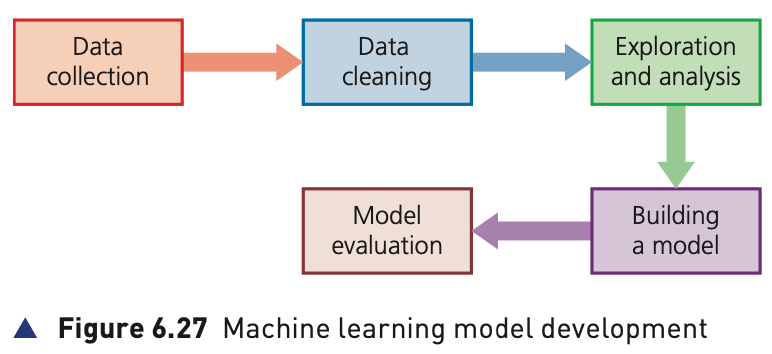Artificial intelligence
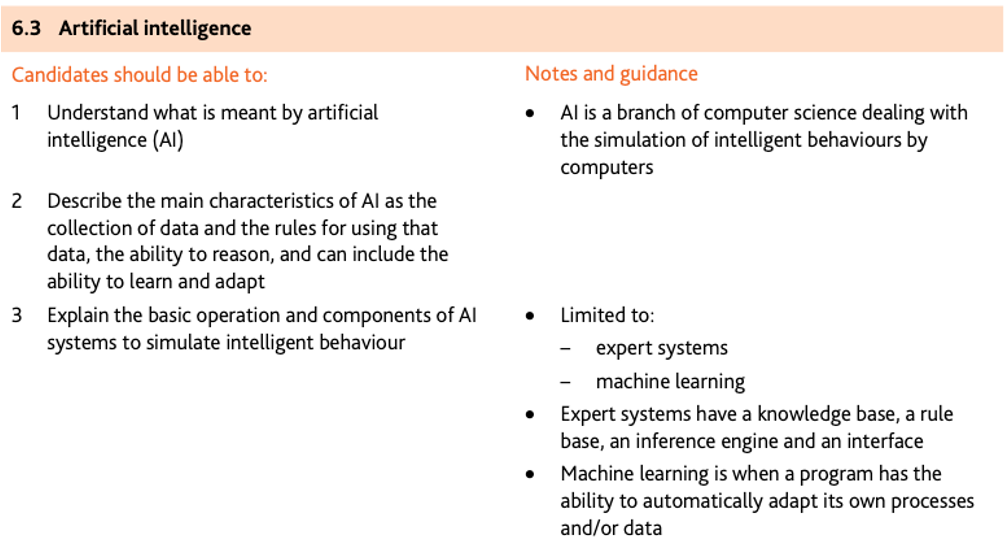
Artificial intelligence (AI)
- Artificial intelligence (AI) is a branch of computer science dealing with the simulation of intelligent human behaviour by a computer. - This is often referred to as the cognitive functions of the human brain (that is, the mental process of acquiring knowledge and understanding through thought, experience and the five senses).
- All of these cognitive functions can be replicated in a machine, and they can be measured against human benchmarks such as reasoning, speech and sight.
Characteristics of AI
- Essentially, AI is really just a collection of rules and data, and the ability to reason, learn and adapt to external stimuli.
- AI can be split into three categories:
- narrow AI – this occurs when a machine has superior performance to a human when doing one specific task
- general AI – this occurs when a machine is similar (not superior) in its performance to a human doing a specific task
- strong AI – this occurs when a machine has superior performance to a human in many tasks.
Examples of AI include
- news generation based on live news feeds
- smart home devices
- use of chatbots
- autonomous cars
- facial expression recognition
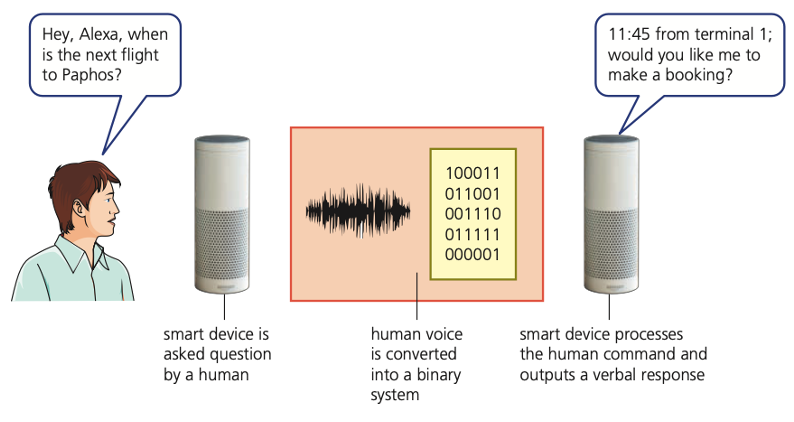

AI system
- This section considers two types of AI system:
- expert system – a computer system that mimics the decision-making ability of a human; expert systems use AI to simulate the judgement and behaviour of a human or organisation that has expert knowledge and experience
- machine learning – this is the science of training computers with sample data so that they can go on to make predictions about new unseen data, without the need to specifically program them for the new data.
Expert systems
Expert systems are a form of AI that has been developed to mimic human knowledge and experiences.
They use knowledge and inference to solve problems or answer questions that would normally require a human expert.
There are many applications that use expert systems:
- oil and mineral prospecting
- diagnosis of a patient’s illness
- fault diagnostics in mechanical and electronic equipment
- tax and financial calculations
- strategy games, such as chess
- logistics (efficient routing of parcel deliveries)
- identification of plants, animals and chemical/biological compounds.
Expert systems have many advantages:
- they offer a high level of expertise
- they offer high accuracy
- the results are consistent
- they have the ability to store vast amounts of ideas and facts
- they can make traceable logical solutions and diagnostics
- it is possible for an expert system to have multiple expertise
- they have very fast response times (much quicker than a human expert)
- they provide unbiased reporting and analysis of the facts
- they indicate the probability of any suggested solution being correct.
Expert systems also have disadvantages:
- users of the expert system need considerable training in its use to ensure the system is being used correctly
- the set up and maintenance costs are very high
- they tend to give very ‘cold’ responses that may not be appropriate in certain medical situations
- they are only as good as the information/facts entered into the system
- users sometimes make the very dangerous assumption that they are infallible.
what makes up an expert system?
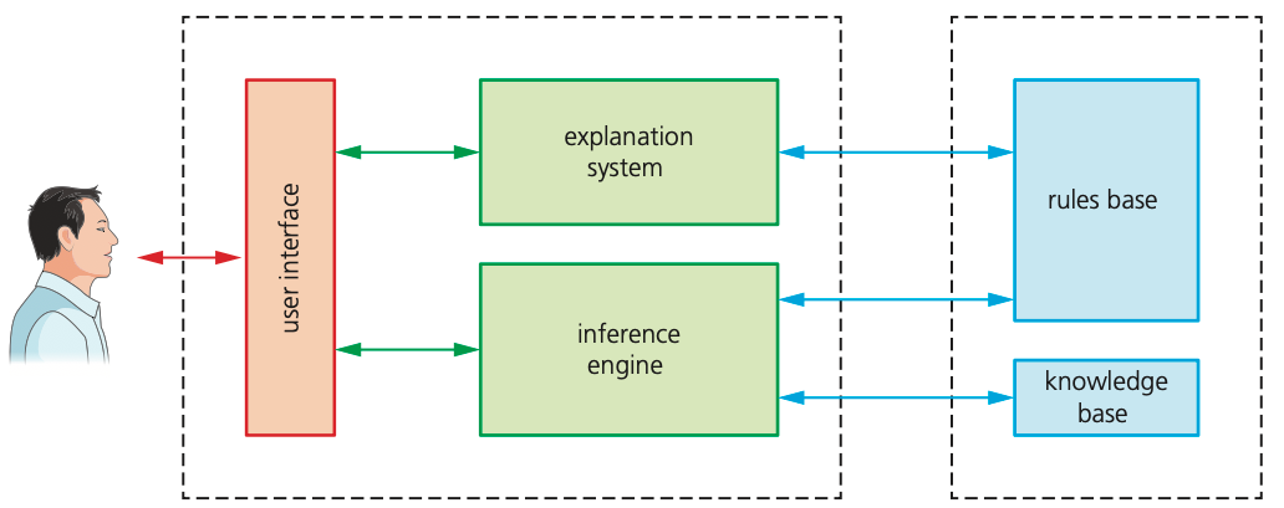
User interface
- method by which the expert system interacts with a user
- interaction can be through dialogue boxes, command prompts or other input methods
- the questions being asked usually only have Yes/No answers and are based on the responses to previous questions.
Inference engine
- this is the main processing element of the expert system
- the inference engine acts like a search engine examining the knowledge base for information/data that matches the queries
- it is responsible for gathering information from the user by asking a series of questions and applying responses where necessary; each question being asked is based on the previous responses
- the inference engine is the problem-solving part of the expert system that makes use of inference rules in the rules base
- since the knowledge base is a collection of objects and attributes, the inference engine attempts to use information gathered from the user to find an object that matches (making use of the rules base to find a match)
Knowledge base
- the knowledge base is a repository of facts
- it stores all the knowledge about an area of expertise obtained from a number of expert resources
- it is basically a collection of objects and their attributes
Rules base
- the rules base is a set of inference rules
- inference rules are used by the inference engine to draw conclusions (the methods used closely follow human reasoning)
- they follow logical thinking like the example above; usually involving a series of ‘IF’ statements, for example:
IF continent = “South America” AND language = “Portuguese”
THEN country = “Brazil”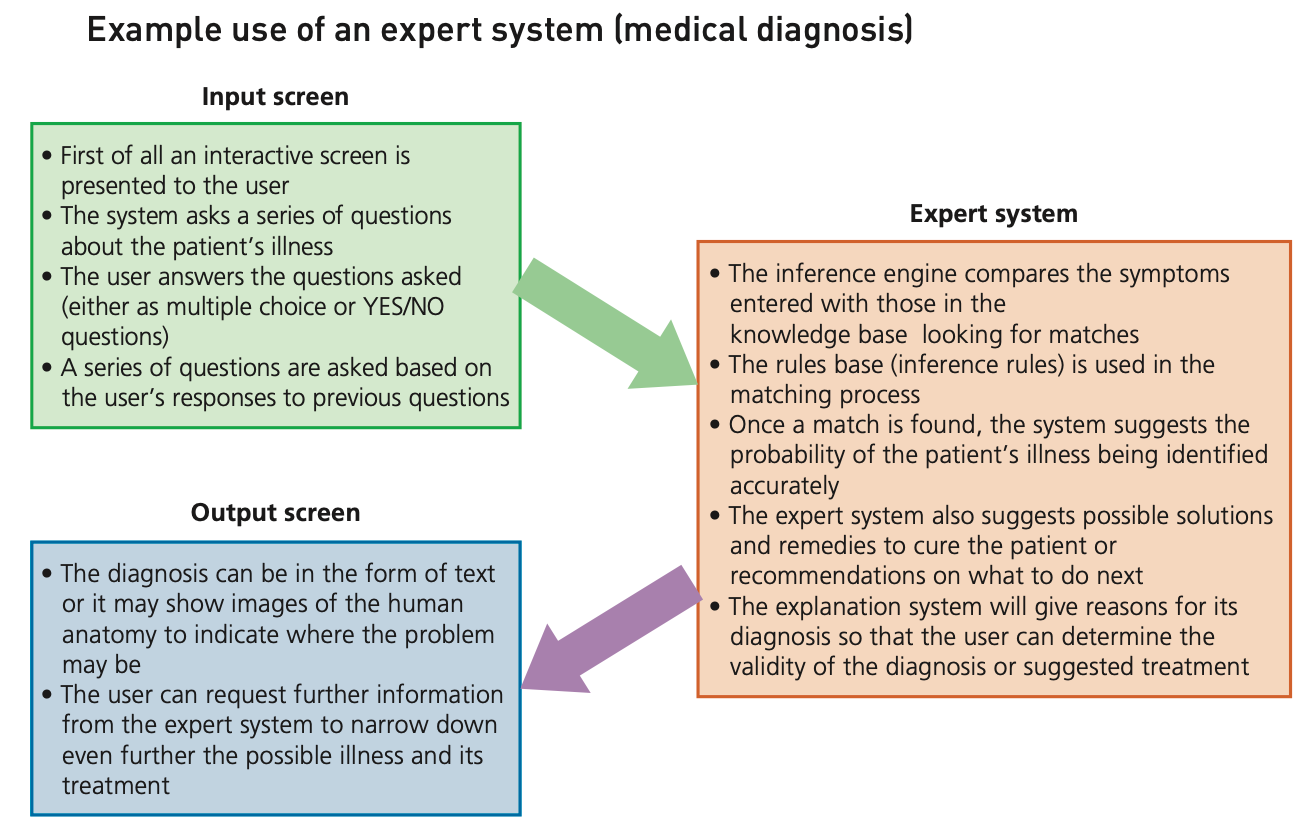
Machine learning
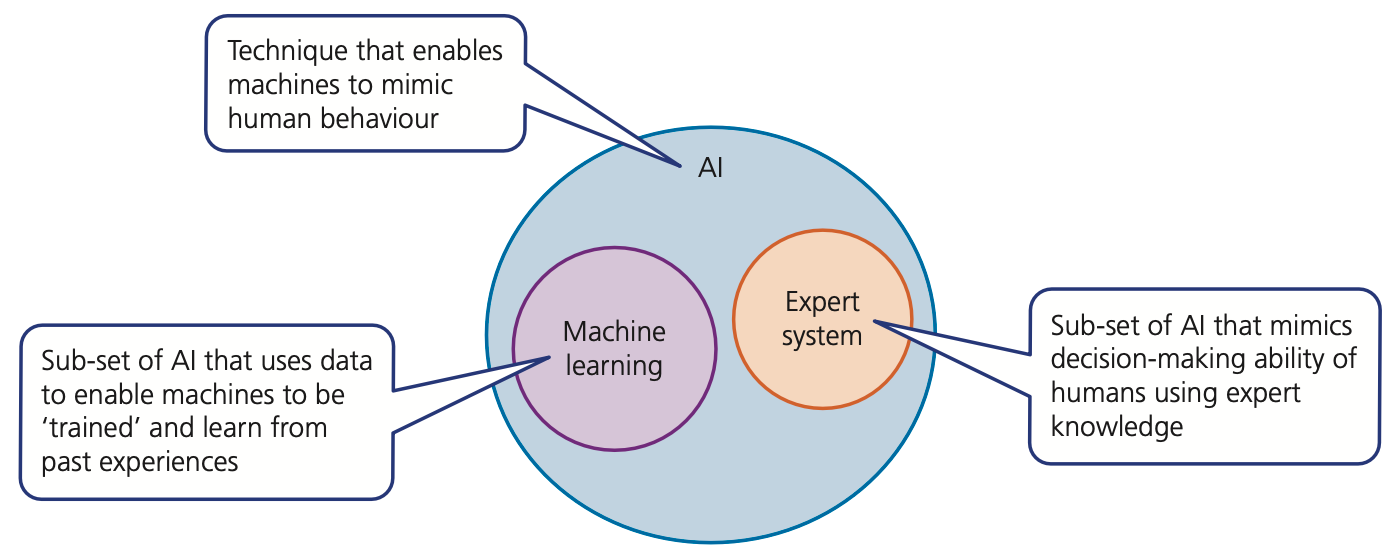
- Machine learning is a sub-set of artificial intelligence (AI), in which algorithms are ‘trained’ and learn from their past experiences and examples.
- It is possible for the system to make predictions or even take decisions based on previous scenarios.
- They can offer fast and accurate outcomes due to very powerful processing capability.
- One of the key factors is the ability to manage and analyse considerable volumes of complex data; some of the tasks would take humans years to complete without the help of machine learning techniques.
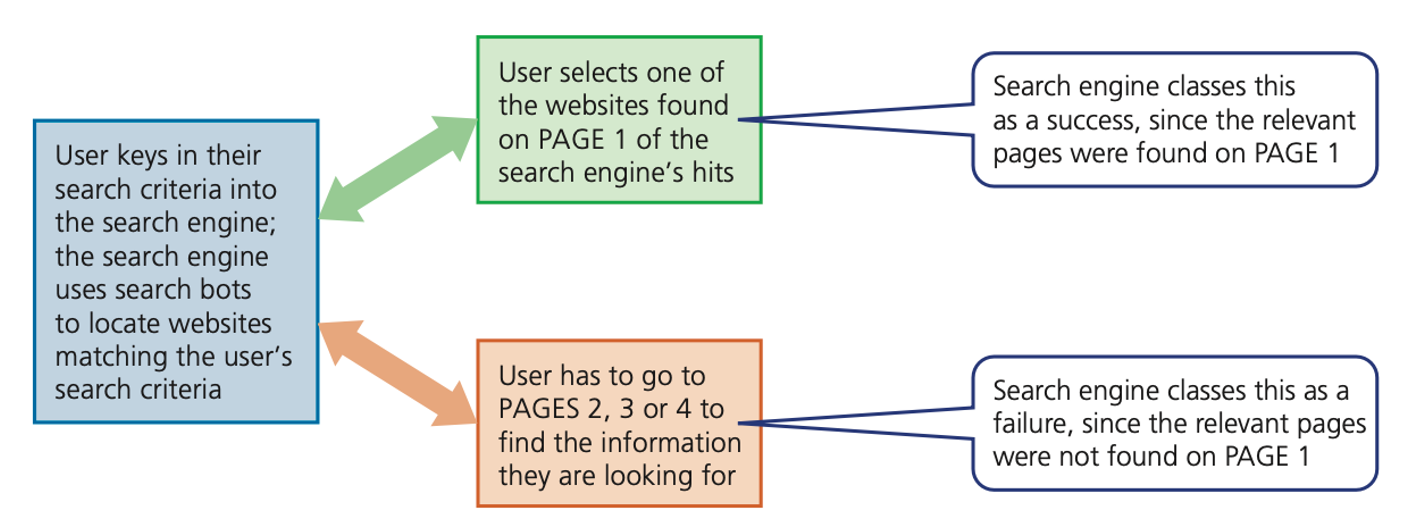
| AI | Machine learning |
|---|---|
| represents simulated intelligence inmachines | the aim is to build machines that are capableof thinking like humans |
| this is the practice of getting machines tomake decisions without being programmeato do so | the aim is to make machines that learnthrough data acquisition, so that they cansolve new problems |
Detection of fraudulent activity
- Data is gathered by a survey or web scraping; for example, to detect credit card fraud, information about customers is gathered, such as types of transactions (does the customer buy designer clothes?), shopping habits and certain personal data.
- Redundant data is then removed; this needs to be carefully done to remove the possibility of wrong predictions.
- The most important machine learning step: the algorithm is trained through real examples of customer purchasing behaviour.
- A model is built based on learning from the training data, and the machine learning algorithm can now be used to detect fraud
- The machine learning model is then fully tested with known data and known outcomes; the system is modified if it hasn’t met its criteria to detect fraudulent activity.
